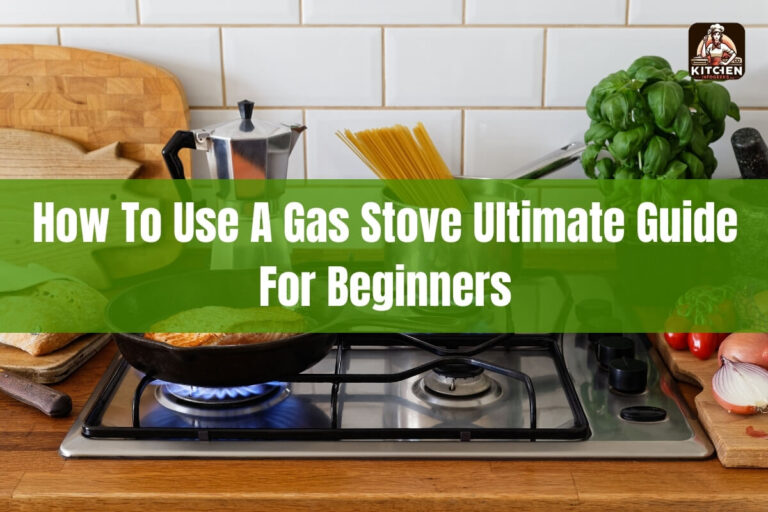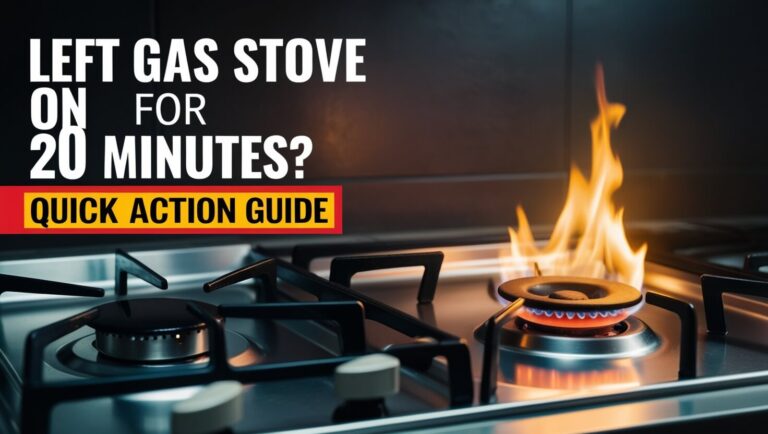
Are you curious about how induction stoves work and whether they’re worth the investment? In this detailed guide, we’ll dive deep into the science behind induction cooking technology and explore its advantages over traditional gas or electric stoves. Get ready to discover a faster, safer, and more energy-efficient way to cook your meals!
The short answer: An induction stove uses electromagnetic induction to directly heat the cookware, instead of relying on radiant heat from a burner or heating element. This innovative cooking method not only saves energy but also offers precise temperature control and faster heating times.
Here’s what we’ll cover:
- What is induction cooking and how does it work?
- The science behind electromagnetic induction and resistive heating
- Key advantages of induction stoves, including energy efficiency, safety, and speed
- Induction cookware requirements and how to identify compatible pots and pans
- Components of an induction stove and additional features to consider
- Applications of induction cooking in professional and commercial kitchens
Let’s get started!
What is Induction Cooking?
Induction cooking is a modern and innovative cooking technology that uses electromagnetic induction to directly heat cookware, rather than relying on thermal conduction or radiation from a heat source. Unlike traditional gas or electric stoves, induction stoves do not have visible heating elements or open flames. Instead, they generate heat directly in the cookware through a process called electromagnetic induction.
The key components involved in induction cooking are:
- A copper coil beneath the cooking surface
- An alternating electric current flowing through the coil
- A magnetic field generated by the alternating current
- Ferromagnetic cookware (e.g., cast iron, magnetic stainless steel)
When induction-compatible cookware is placed on the cooking surface, the magnetic field induces electric currents within the cookware itself. These currents, known as eddy currents, encounter resistance from the cookware material, generating heat through a process called resistive heating. The heat is produced directly in the cookware, efficiently transferring energy to the food being cooked.
The Science Behind Induction Cooking
Electromagnetic Induction
Electromagnetic induction is the principle that underlies the operation of induction stoves. It is a phenomenon where a changing magnetic field induces an electric current in a conductive material, such as ferromagnetic cookware.
In an induction stove, an alternating electric current is passed through a copper coil beneath the cooking surface. This alternating current creates a rapidly changing magnetic field around the coil. When induction-compatible cookware is placed on the cooking surface, the changing magnetic field induces electric currents (eddy currents) within the cookware material.
How Induction Heats Cookware
The eddy currents induced in the ferromagnetic cookware encounter resistance from the cookware material itself. This resistance leads to the generation of heat within the cookware through a process called resistive heating, or Joule heating.
The heat is produced directly in the cookware, efficiently transferring energy to the food being cooked. Unlike traditional cooking methods, where heat is transferred from a heat source to the cookware and then to the food, induction cooking eliminates the intermediate step, resulting in faster and more efficient heating.
Advantages of Induction Cooking
Induction cooking offers several advantages over traditional gas or electric stoves, making it an attractive choice for modern kitchens.
Energy Efficiency
One of the primary advantages of induction cooking is its energy efficiency. Induction stoves are up to 90% efficient in transferring energy to the cookware, compared to only 38% efficiency for gas stoves and 70% for electric coil stoves (according to the U.S. Department of Energy). This means that less energy is wasted during the cooking process, resulting in lower energy bills and a reduced environmental impact.
Safety and Ease of Use
Induction stoves are inherently safer than gas stoves, as there is no open flame or exposed heating element. The cooking surface itself remains relatively cool, as only the cookware gets hot. This reduces the risk of accidental burns or fires caused by spilled food or forgotten burners.
Additionally, induction stoves are easy to clean. Since the cooking surface does not get as hot as traditional stoves, spills and splatters are less likely to bake on, making cleanup a breeze.
Induction stoves also offer precise temperature control, allowing you to adjust the heat level with great accuracy. This helps prevent overcooking or undercooking, ensuring consistently delicious results.
Faster Cooking Times
Another significant advantage of induction cooking is its speed. Because the cookware is heated directly and efficiently, induction stoves can boil water up to 50% faster than traditional electric stoves. This means shorter cooking times and more efficient meal preparation.
For example, according to a study by the U.S. Department of Energy, it takes an induction stove only 4 minutes to boil 1 quart of water, compared to 7 minutes for an electric coil stove and 8 minutes for a gas stove.
Induction Cookware Requirements
To take advantage of induction cooking, you need to use cookware that is compatible with the technology. Induction stoves require ferromagnetic cookware, which means cookware made from materials that can be magnetized, such as:
- Cast iron
- Magnetic stainless steel
- Enameled cast iron or steel
A simple way to check if your existing cookware is induction-compatible is to see if a magnet sticks firmly to the bottom of the pot or pan. If the magnet clings strongly, the cookware is likely suitable for induction cooking.
If you need to purchase new cookware, look for pots and pans labeled as “induction-ready” or “induction-compatible.” Many cookware manufacturers now offer dedicated induction cookware lines or sets.
Components of an Induction Stove
An induction stove typically consists of the following key components:
- Cooking Surface: This is the flat, smooth surface where you place your cookware. It is typically made of a durable, heat-resistant material like ceramic glass or pyroceram.
- Induction Coils: Underneath the cooking surface, there are copper coils that carry the alternating electric current responsible for generating the magnetic field.
- Control System: Induction stoves have a control panel or touch controls that allow you to adjust the power level, set timers, and access additional features.
Some induction stoves may also include additional features like:
- Automatic pan detection: The stove can detect when a compatible pan is placed on the cooking surface and adjust the power accordingly.
- Safety features: Many induction stoves have built-in safety features like child locks, automatic shutoff, and overheating protection.
- Bridging zones: Some models allow you to bridge two cooking zones, creating a larger surface area for larger pots or griddles.
- Specialized cooking modes: Certain induction stoves offer pre-programmed cooking modes for tasks like simmering, melting, or keeping food warm.
Induction Cooking in Professional and Commercial Settings
While induction cooking has traditionally been associated with residential kitchens, it is increasingly gaining popularity in professional and commercial settings as well.
Restaurants and commercial kitchens can benefit from the energy efficiency, precise temperature control, and faster cooking times offered by induction technology. Induction stoves can help reduce energy costs and improve kitchen productivity.
However, there are also some potential drawbacks to consider for commercial applications:
- Initial investment: Commercial-grade induction equipment can be more expensive than traditional gas or electric ranges.
- Cookware compatibility: Ensuring all cookware is induction-compatible may require purchasing new equipment or using induction disks as an adapter.
- Ventilation requirements: While induction stoves produce less ambient heat, proper ventilation is still necessary to remove any cooking fumes or steam.
Despite these considerations, many high-end restaurants and commercial kitchens are embracing induction cooking for its efficiency, performance, and environmental benefits.
Conclusion
Understanding how induction stoves work can help you appreciate the innovative technology behind this energy-efficient and user-friendly cooking method. By utilizing electromagnetic induction and directly heating the cookware, induction stoves offer precise temperature control, faster cooking times, and improved safety compared to traditional gas or electric stoves.
Whether you’re a home chef looking to upgrade your kitchen or a professional considering induction for commercial applications, this comprehensive guide has provided you with valuable insights into the science, advantages, and practical considerations of induction cooking.
So, if you’re in the market for a new stove and value energy efficiency, speed, and ease of use, an induction stove might be the perfect choice for your cooking needs. Embrace the future of cooking with induction technology!






